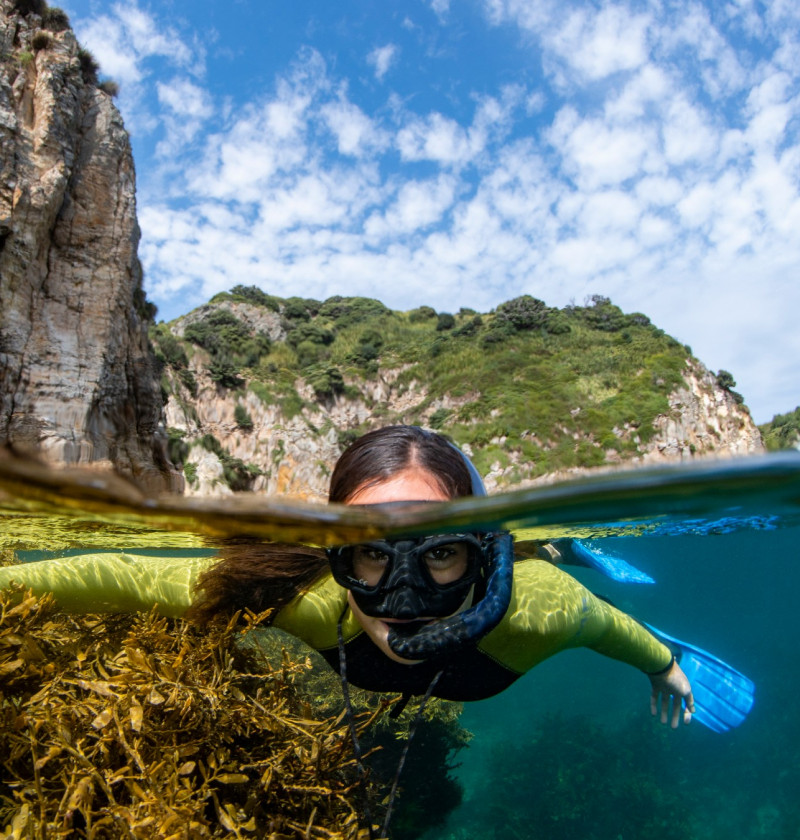Our marine environment 2019

Our marine environment 2019 examines the most pressing issues in our oceans, seas, coastlines and estauries.
The report is produced jointly by the Ministry for the Environment and Stats NZ.
Publication reference number: ME 1468
Our marine environment 2019 examines the most pressing issues in our oceans, seas, coastlines and estauries.
The report is produced jointly by the Ministry for the Environment and Stats NZ.
Publication reference number: ME 1468
Te moana, the coast and oceans of Aotearoa New Zealand, are central to our identity and intertwined with our history – we are a maritime nation. For Māori, te moana is a source of whakapapa.
We have one of the largest areas of ocean in the world. Our marine landscapes and habitats are diverse, supporting complex ecosystems and many unique species.
Our oceans support us:
Our marine environment 2019 report summarises four priority issues for the marine environment.
There has been a decline in biodiversity, and habitat condition and extent, as a consequence of our activities.
A decline in the number of kuku (green-lipped mussel), from over 100 million in 2007 to less than 500,000 in 2016, was observed in Ōhiwa Harbour.
Declining marine health makes our coasts and oceans less resilient to disturbances, including climate change.
Read the section now: Issue 1: Our native marine species and habitats are under threat
Our activities on land, especially agriculture and forestry, and growing cities, increase the amount of sediment, nutrients, chemicals, and plastics that enter our coasts and oceans.
In estuaries and harbours across the Waikato region, historical sediment accumulation rates were less than 0.5 millimetres per year. After European settlement, rates became unstable, reaching almost 200 times historical rates.
Pollution affects our ability to harvest kaimoana, swim, and fish in our favourite local places.
Read the section now: Issue 2: Our activities on land are polluting our marine environment
Our activities on coasts and in oceans like fishing, aquaculture, shipping, and coastal development, provide value to our economy and support growth.
The accidental capture (bycatch) of seabirds and marine mammals is decreasing but remains a significant pressure on some populations. Seabird deaths in the 2016/17 fishing year were estimated at 4,186.
Most of our activities in the marine environment tend to increase in intensity towards the coast. On top of the pressure from coastal development, this results in coastal environments being most impacted. Coastal waters tend to hold the greatest diversity of species.
Read the section now: Issue 3: Our activities at sea are affecting the marine environment
Global concentrations of atmospheric greenhouse gas are increasing because of activities like burning fossil fuels for heat, transport, and electricity generation. This is causing unprecedented change in our oceans.
An unprecedented marine heatwave occurred in the Tasman Sea and near the Chatham Islands from November 2017 to February 2018 during our hottest summer on record.
Warmer seas affect the growth of even the smallest things in the ocean like plankton which can impact the whole food web. Some temperature-related changes in individual species and fish communities have been observed.
Roads, bridges, coastal communities, and habitats are at risk from flooding and sea-level rise.
Read the section now: Issue 4: Climate change is affecting marine ecosystems, taonga species, and us
The pressures associated with biodiversity loss, our activities on land and at sea, and climate change have interacting effects on coasts and oceans.
This report looks at the individual and cumulative pressures on kuku (as shown in the infographic on previous page). This is illustrative only and helps to build a picture of what the messages in Our marine environment 2019 mean within the context of a single species.
The ability to report on the impacts of changes on species and habitats in the marine environment is often limited by a lack of baseline data, understanding of tipping points, and connections between domains.
Working together across mātauranga Māori and other science disciplines is improving our holistic, place-based knowledge that is crucial in understanding cumulative effects.
For Māori, the whenua and moana are inextricably linked and there is a complement or balance for everything on land in the oceans.
Read the section now: All our activities put cumulative stress on the marine environment
Access the new and updated indicators for Our marine environment 2019 on the Stats NZ website.
Access the datasets from Our marine environment 2019 on the MfE DataService.
We have corrected the position of the trend line in the Munida transect pH measurements graph, illustrated in figure 12 on page 47. The figure was initially published with the intercept of the trend line being placed slightly too high but with the correct slope. Therefore, the correction of the intercept has only changed the position of the line but has had no effect on the direction of the illustrated trend itself.

Our marine environment 2019
October 2019
© Ministry for the Environment